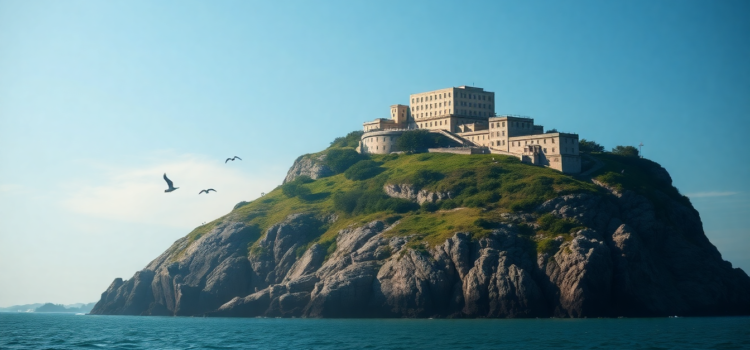
Alcatraz: From Bird Sanctuary to Infamous Prison Before Birdman Fame
Alcatraz Island, a mere speck in San Francisco Bay, has captured the imagination of millions due to its multifaceted history. Once a humble bird sanctuary teeming with western gulls and cormorants, it evolved into one of the most notorious prisons in America. This blog explores the intriguing journey of Alcatraz, from its military origins to its time as a federal penitentiary, and eventually, its emergence as a prominent cultural landmark.
The Bird Sanctuary: Alcatraz’s Natural Beginnings
Originally serving as a natural habitat, Alcatraz Island was home to diverse bird species in the mid-19th century. The island’s strategic location was not only recognized by humans; seabird colonies prospered here. It’s fascinating to learn that before it housed infamous prisoners, Alcatraz was a thriving sanctuary, playing a crucial role in bird conservation in the Golden Gate area.

Transformation to a Military Fortress and Prison
In 1854, Alcatraz saw the establishment of the first lighthouse on the western coast of the United States, marking a significant step in maritime safety. However, its strategic location soon prompted a transformation into a military fortress during the 1850s, designed to protect the bay. According to the National Park Service, its evolution into a federal penitentiary in 1934 was marked by the addition of reinforced concrete structures and its reputation for being inescapable due to the surrounding treacherous waters.
Iconic Inmates and Escape Attempts: The Prison Era
Prison history at Alcatraz is filled with tales of infamous prisoners, including Al Capone and George “Machine Gun” Kelly. The island’s isolation made it an ideal site for housing America’s most dangerous criminals. The Birdman of Alcatraz, Robert Stroud, although famous for his avian expertise, ironically never kept birds while incarcerated here. Notably, the federal penitentiary Alcatraz had its fair share of escape attempts, though none were officially successful.
- High Costs: At approximately $10 per prisoner per day, the operating expenses were significantly above the national average, leading to its closure as a prison in 1963.
- Notable Escapes: Despite the odds, several escape attempts added to its infamy, yet the island’s isolation meant none could truly flee.
Alcatraz’s Legacy and Cultural Significance
After its closure as a prison, Alcatraz transformed into a symbol of cultural significance and intrigue. It went beyond its notorious past to become a major tourist attraction, drawing over 1.4 million visitors annually by the early 21st century. Today, it stands as a testament to historical evolution, capturing stories from enhancing bird habitats to housing America’s iconic inmates and continuously engaging the public with its rich legacy.
Conclusion
From its humble beginnings as a bird sanctuary to its notorious prison days, the Alcatraz historical timeline encapsulates transformation, intrigue, and multifaceted roles throughout history. Whether you visit for the Alcatraz Island wildlife or its storied past, the island remains a testament to adaptable human and natural history. Share your thoughts and experiences about Alcatraz in the comments below, and let us know how it impacted your perspective.
Frequently Asked Questions
What is the history of Alcatraz Island?
Initially a bird sanctuary, Alcatraz transformed into a military fortress, and later into a federal prison before becoming a cultural landmark and tourist attraction.
Why was Alcatraz selected as a bird sanctuary?
The island’s isolated geography and natural resources made it an ideal environment for nesting seabirds, contributing to important conservation efforts.
How did Alcatraz transform into a prison?
Alcatraz was repurposed from a military fortress to a federal penitentiary in 1934, designed to hold the most notorious criminals in the U.S. due to its inescapable geography.
Who were some infamous prisoners at Alcatraz?
Notable inmates included Al Capone, George “Machine Gun” Kelly, and Robert “Birdman of Alcatraz” Stroud, known for his study of birds and criminal notoriety.
Is there any wildlife on Alcatraz Island today?
Yes, the island now serves as a protected area for diverse bird species and is part of the Golden Gate National Recreation Area.








Comments